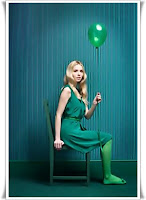 As a new or even top executive, your image matters. In today’s business environment, judgments are made in the blink of an eye. Follow these five tips to avoid common executive image mistakes and ensure your effectiveness.
As a new or even top executive, your image matters. In today’s business environment, judgments are made in the blink of an eye. Follow these five tips to avoid common executive image mistakes and ensure your effectiveness.Clothing that Makes You Appear Invisible
You may want to be a dynamic executive. However, if you find the boardroom keeping you out, the first question to ask is: are you wearing your personal power colors that demand attention. Color is a powerful business tool that you do not want to overlook as you build your executive image. The fashion colors this season may or may not be your friends. Get your colors professionally done to ensure every bright, neutral or pastel color you put on is sending the message you want it to send. You will find that when you wear the colors that are best for you, you will get more attention, be taken more seriously and perhaps best of all, you will feel more confident.
Falling Head First into the Fashion Trends
If you really want to be fashion forward from 9-5, consider wearing only one trend piece at a time. This way you will still look current and hip without looking like you care more about fashion than looking professional.
Overdoing Accessories…or No Accessories at All
At work, your accessories should complete and complement your outfit, not be attention grabbers themselves. Still, do not be afraid to wear one statement jewelry piece or bold accessory – just not several at the same time. A great handbag or briefcase can polish your outfit to perfection. However, four necklaces, six bracelets and a big buckle belt will be a bit much for any outfit, and will send the wrong message at the office.
This also applies to your makeup – wear makeup, but do not overdo it. Your makeup is also an accessory – it should be fresh and should polish your look. Keep the adventurous accessories and dramatic makeup for your evening activities.
A Dated Hairdo
Select one or two of the tips above to focus on over the next two weeks and make the necessary adjustments to your executive image. You will see results and garner the respect and attention you deserve, while having more confidence in your executive image.














